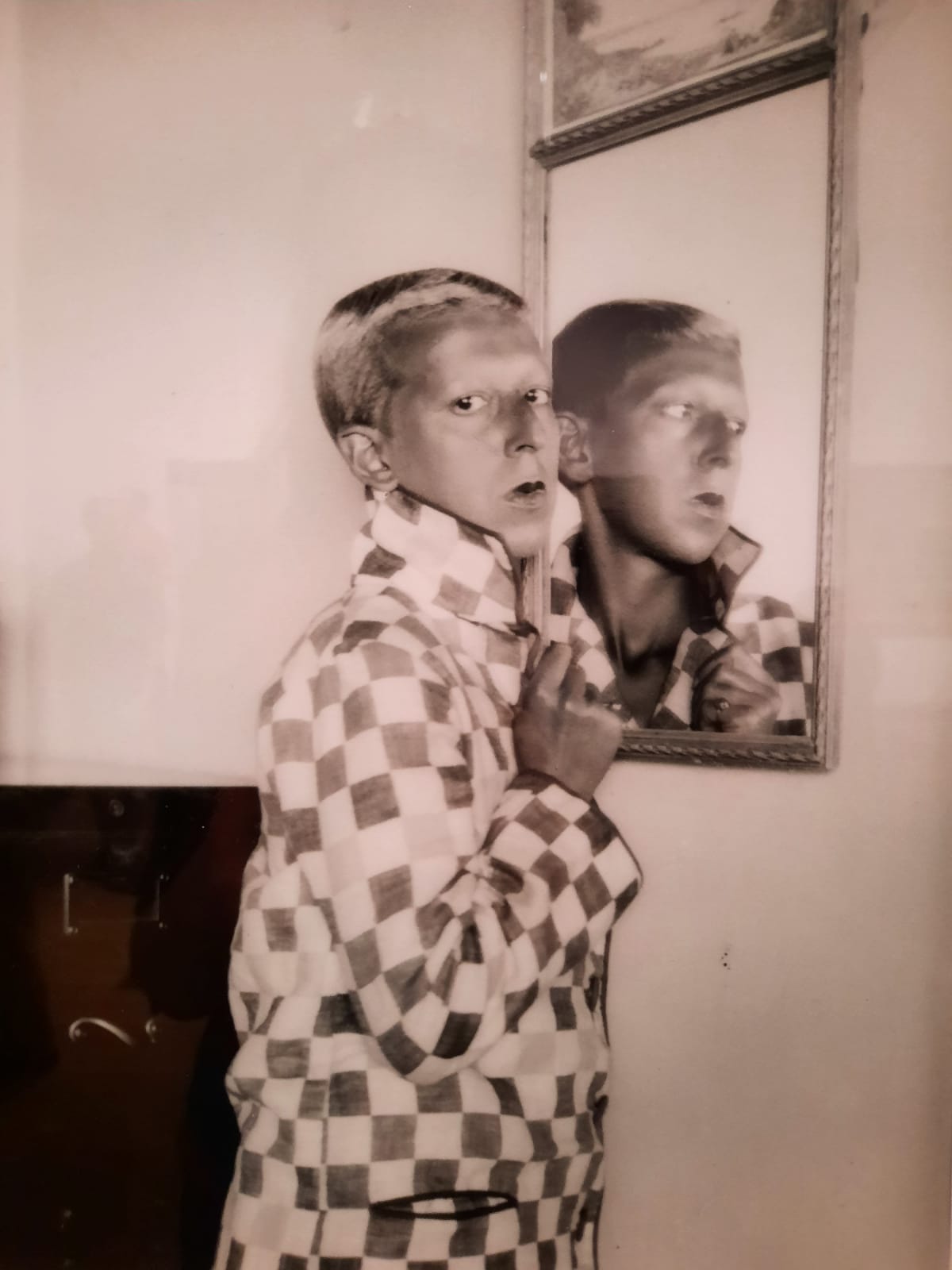Surrealism Beyond Borders – Tate Modern, London
A review of Surrealism Beyond Borders, an expansive exhibition on now at Tate Modern. The broad definition of Surrealism is both a point of interest and a source of confusion.

Surrealism Beyond Borders
What is Surrealism? I’m perhaps less clear on this than I was before I saw Surrealism Beyond Borders recently at Tate Modern. This isn’t normally the way of exhibitions. For the most part, I can trust that I will arrive, be introduced to the subject matter, see some supporting evidence, and leave satisfied that I’ve learned something new. Sort of like an essay in art form. But not so with the Tate’s latest offering. My exhibition buddies and I were left asking such questions as “Is anything Surrealism, then?” and “Isn’t that one more [insert artistic movement name].”
Partly, this is actually what the Tate set out to do. Surrealism Beyond Borders aims to challenge our assumption that Surrealism was a bunch of Parisian avant garde insiders circa 1925. Instead, the exhibition brings together works from all over the world and from the 1920s to 1970s, to show just what an influential movement this was.
Why the confusion, then? I can speak for myself here. I felt that the definition of Surrealism used for the exhibition was so broad, it was hard to find anything that didn’t fit. As far as it is defined at the outset of the exhibition, we learn that the curators see Surrealism as ‘an interrogation of political and social systems, conventions and dominant ideologies.’ Isn’t that… most art? Or at least most engaged, meaningful art?
There’s a bit more to it in the Tate’s description; about dynamism, Surrealism’s transnational quality and its use from the outset as a tool for demanding liberation (political, social, personal). But when we know from the outset that we will see works by avowed Surrealists, those who never joined the group, those who worked in parallel or those connected loosely with the movement, the connections start to feel tenuous and the overall thesis a little fuzzy.
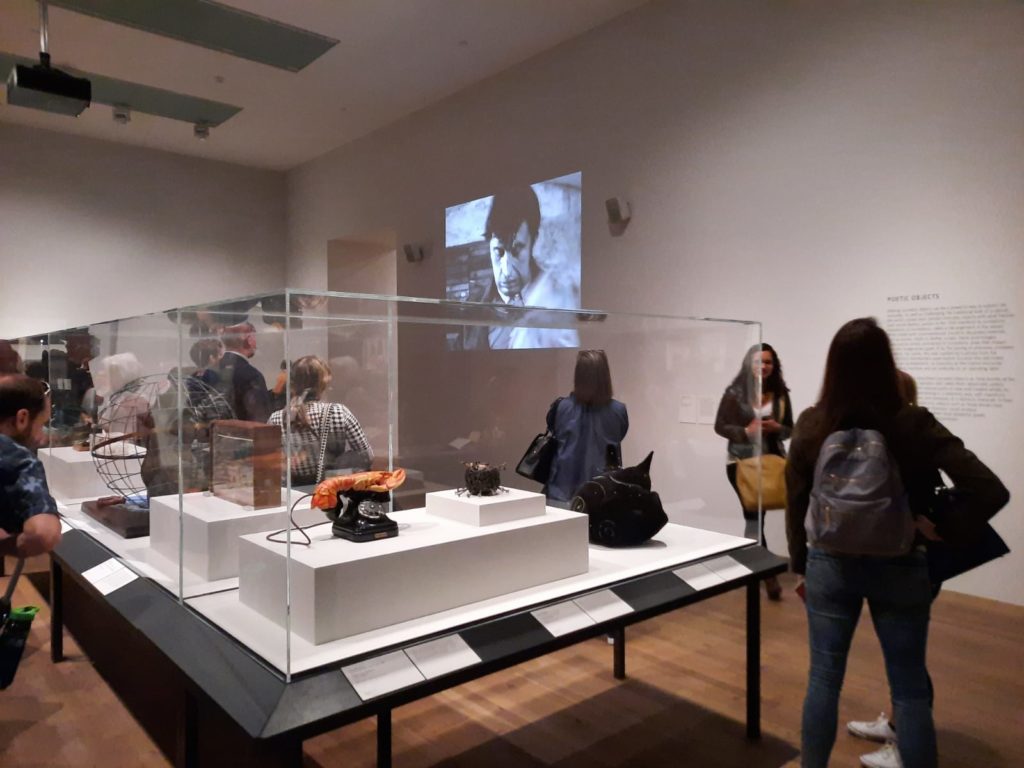



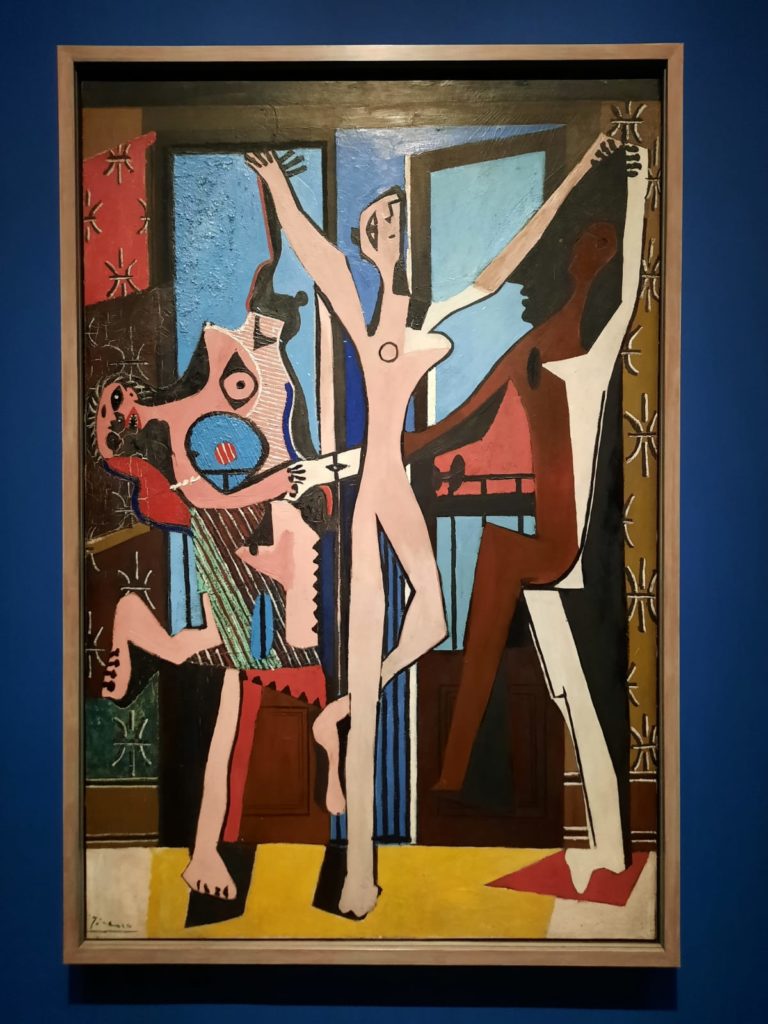

Convergence Points
Just who is represented in this exhibition, then? Well as I alluded to above, basically everyone. There are famous Surrealists (Dalí, Claude Cahun) and more obscure artists. Artists from as far afield as Cuba, Egypt, New Zealand, Korea and Mozambique. The sorts of 1920s cadavres exquis you would expect to see, through to radical 1970s magazines from Chicago. Even Picasso makes a couple of appearances.
An organising principle which I thought worked well was to explore particular ‘convergence points’ rather than different nationalities. For instance, there was quite a gathering of Surrealist artists in Mexico in the 1930s, not all Mexican (eg. British-born Leonora Carrington). Separating these artists according to their passports would ignore the rich exchange of ideas between them and the importance of location as a context.
And taking a step back from questions of how to define Surrealism, there really is a wonderful variety of art on display here. There are paintings, sculptures, works on paper, and photographs. There are also plenty of films, which provide moments to stop, rest and contemplate during your journey through what is quite a big exhibition with a lot to take in. Even if I was bemused at times, I enjoyed getting to know artists I wasn’t familiar with; for instance Len Lye’s Oceanic-inspired 1920’s animation, or a disturbing comment on the aftermath of war by Yamashita Kikuji.

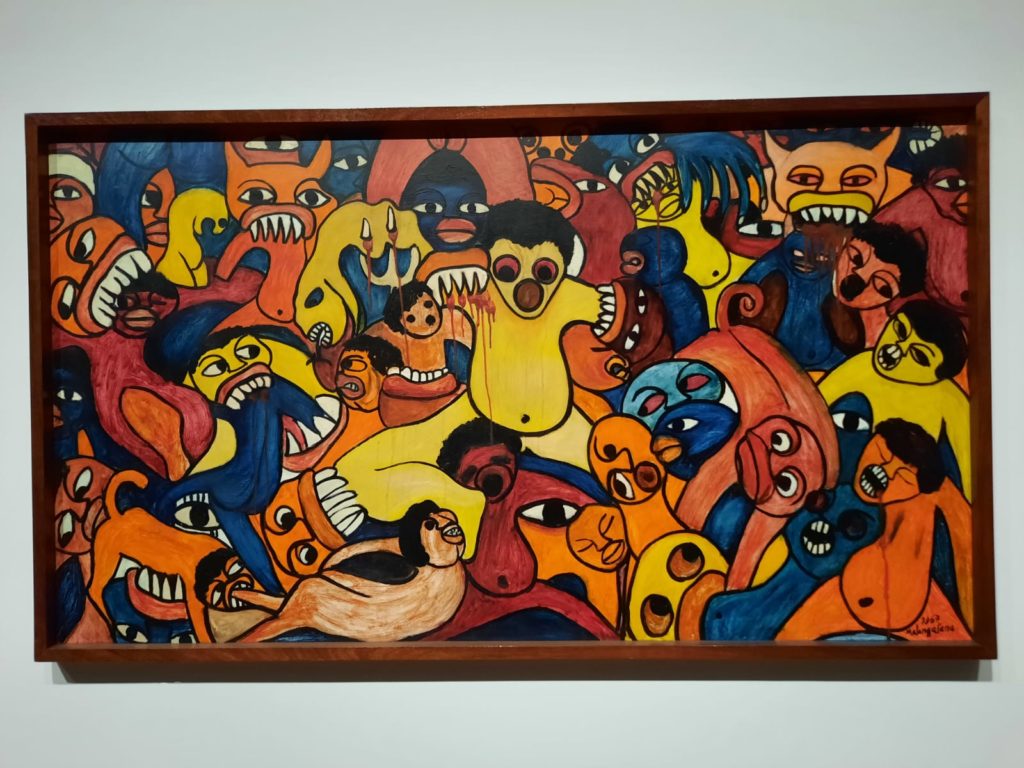
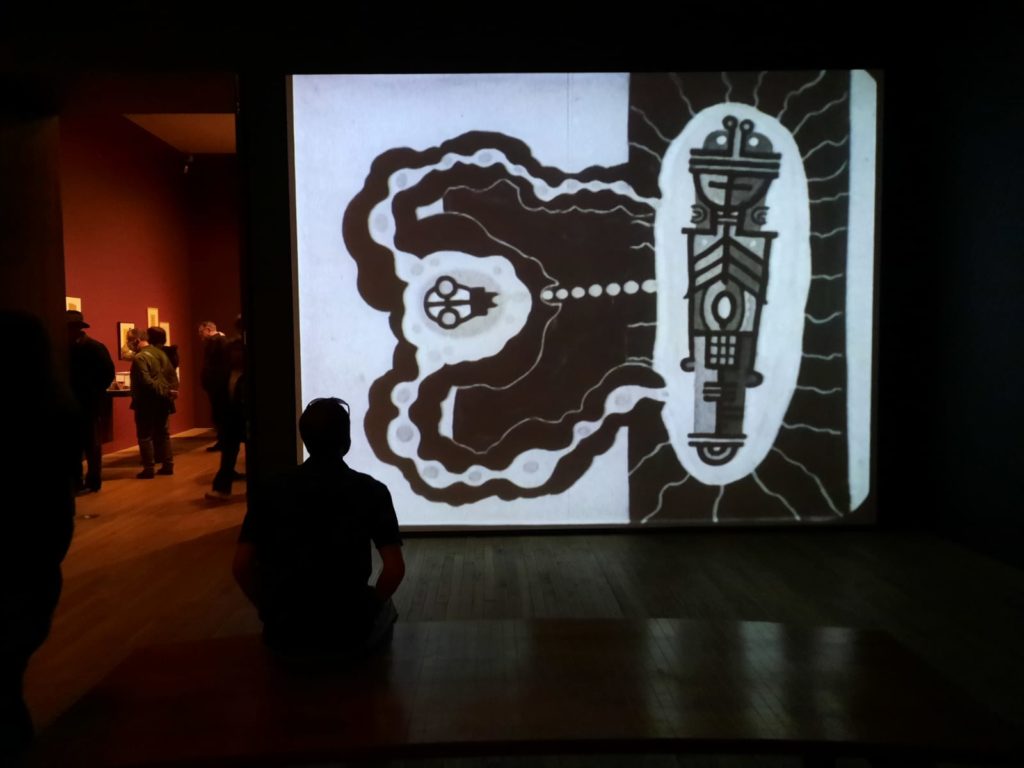

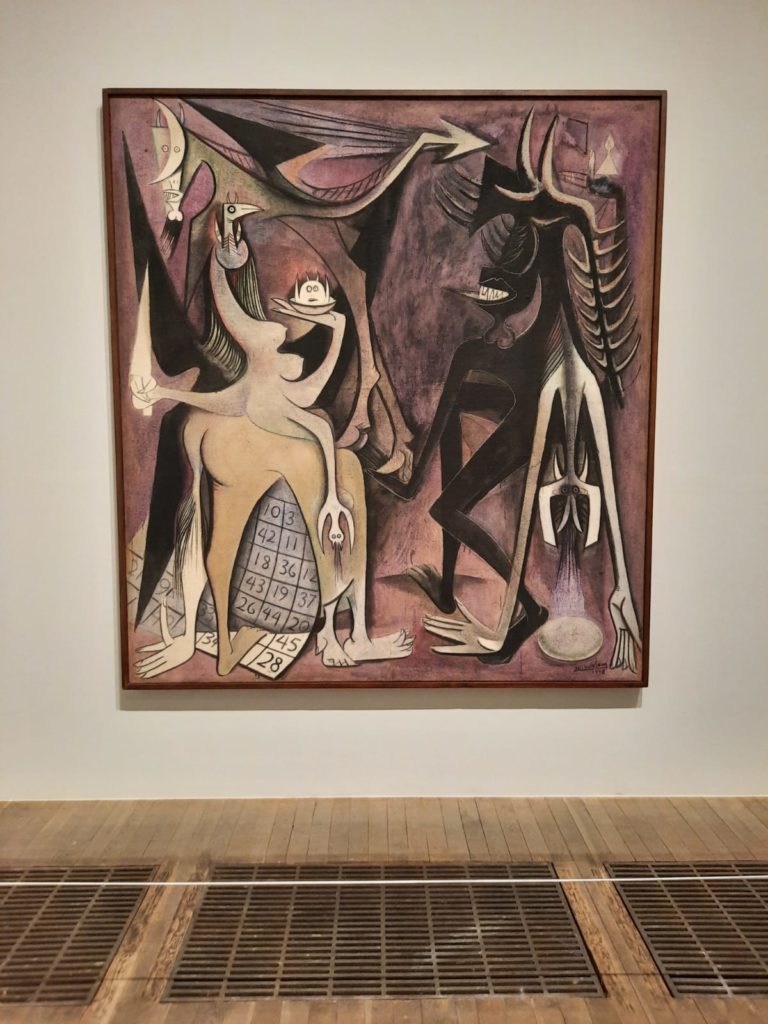

But What Is Surrealism?
In this review, as was the case during my visit to the exhibition, I keep coming back to the question: What is Surrealism? Is it anyone who once dabbled with Surrealist ideas? Any artist who does not depict ‘reality’ in their works? I found it increasingly hard to pin down as I took in the exhibition. Despite the inclusion of some familiar anchor points like Dalí’s lobster telephone or recognisable works by Magritte.
There is a part of me that thinks that, by bringing all of these artists and artworks under the umbrella term Surrealism, it actually does a disservice to the idea of Surrealism as a tool for liberation. Particularly liberation from colonialism. Are we really saying that all of these artists’ work stems from avant garde, colonial capital Paris? For me, this does a bit of a disservice to some of the artists represented. Or maybe I’m doing a disservice to the curators – I’m sure their arguments are more nuanced than this. The trouble is that there is just so much to take in that the central points become a little elusive.
Knowing that there is so much exciting art here that British audiences do not often see, I would urge you to go and see this exhibition for yourself (and let me know in the comments if you agree or disagree with my assessment!). Maybe you will be able to tell me, once and for all, what Surrealism actually is once it moves beyond its original Parisian avant garde borders.
Salterton Arts Review’s rating: 3/5
Surrealism Beyond Borders on until 29 August 2022
If you see this after your page is loaded completely, leafletJS files are missing.

